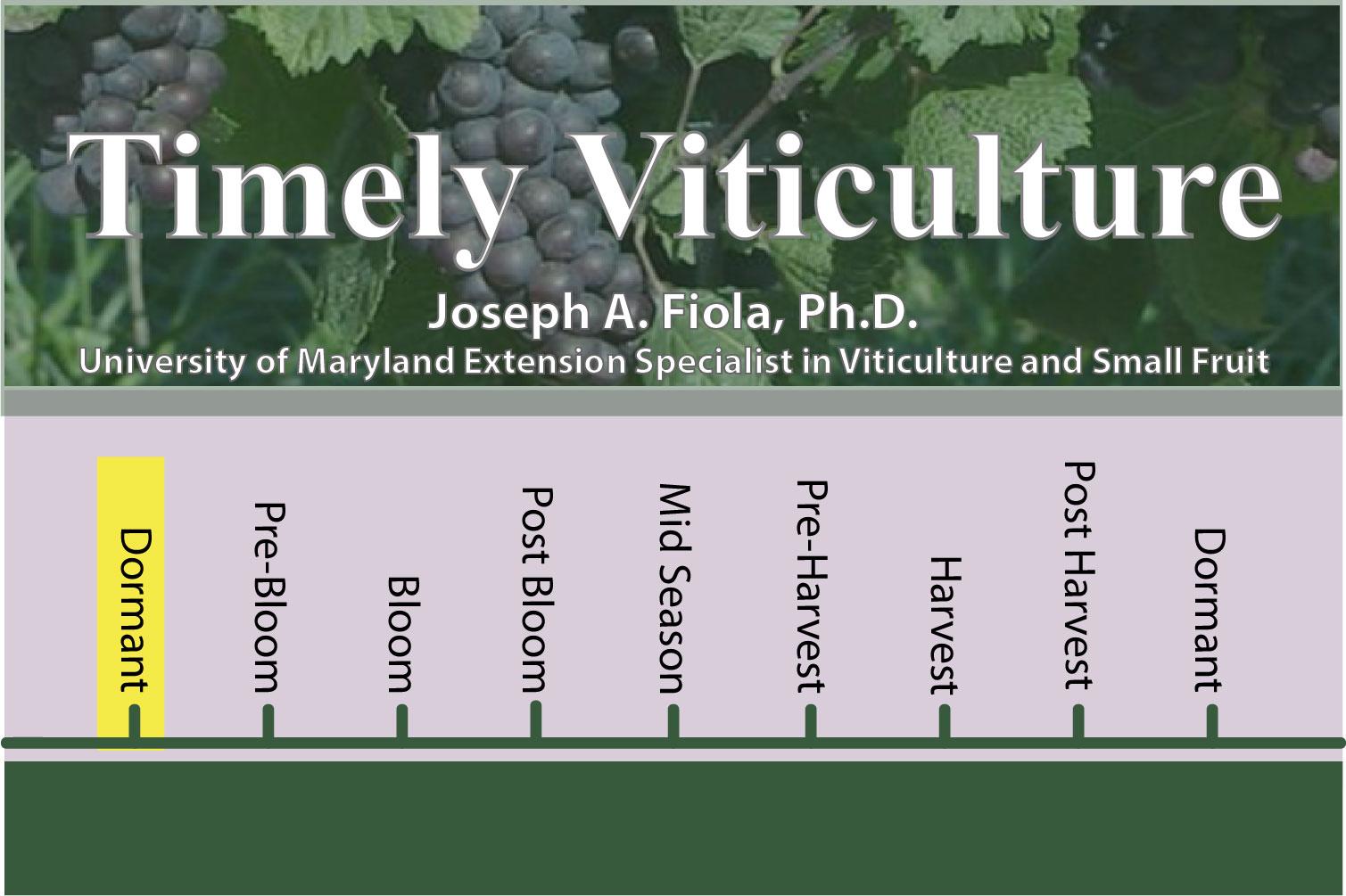Warm Weather and Deacclimation
Many fruit growers get understandably concerned in January and February when we get a run of “warm’ weather like we have been experiencing. When a deciduous vine or tree experiences weather warm enough to start the deacclimation process, there is an increased risk of winter damage to buds and wood. Here is a simplified model of dormancy.
Dormancy
Deciduous vines go through various phases as part of their winter survival:
- Acclimation – As temperatures drop in the fall, the vine begins to “go dormant” and slowly becomes more and more tolerant to lower and lower temperatures.
- If you remember correctly, this past fall temperatures slowly went down and we did not have a hard frost until well into November in most locations in the state – that was premium acclimation conditions leading to good cold tolerance.
- Tony Wolf at VA Tech reported that the MLTE values he got from testing Traminette and Viognier were all very good, indicating very good acclimation in fall and early winter.
- Dormant - When vines have reached “full dormancy” they then need to experience a certain period of time of temperatures around 40 degrees Fahrenheit to satisfy their “rest.”
- This year December was colder than average, so most vines and fruit trees received enough cold to satisfy their rest requirement by the end of the year.
- This year December was colder than average, so most vines and fruit trees received enough cold to satisfy their rest requirement by the end of the year.
- Deacclimation - After their rest is satisfied, they then require another period of time with conditions above a specific temperature to come out of dormancy and begin a new growth cycle.
- During this period, grapevines in the Mid-Atlantic typically experience a series of deacclimation and deacclimation periods caused by periods of alternating warm and cold weather. This is what many refer to as the “fluctuating temperatures” of January and February.
- During this period, grapevines in the Mid-Atlantic typically experience a series of deacclimation and deacclimation periods caused by periods of alternating warm and cold weather. This is what many refer to as the “fluctuating temperatures” of January and February.
- Vines are more sensitive to cold damage when they have recently experienced a period of deacclimation, especially when temperatures drop very low and quickly shortly after the warm spell.
- For example is a dormant vine can normally tolerate down to 0 degrees with no bud damage, after a period of deacclimation above 50, the vine may only be able to only tolerate +5 degrees with no damage and will experience a percentage of bud death at 0 degrees.
- If temperatures drop down gradually slowly after the warm spell, the vines have the capacity to “re-harden,” possibly even down to their previous low-temperature tolerance (in this example back down to 0 degrees).
Let’s all hope for a gradual change back to “reasonably cold” weather - for the vines and fruit trees at least.
Timely Viticulture is designed to give those in the Maryland grape industry a timely reminder on procedures or topics they should be considering in the vineyard.
